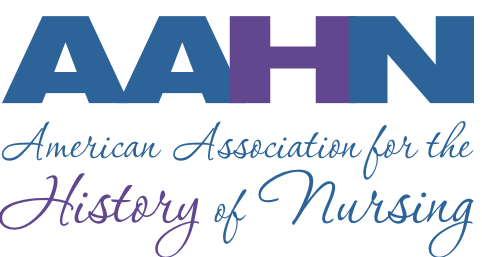POSITION PAPER ON HISTORY IN CURRICULUM
Nursing History in the Curriculum:
Preparing nurses for the 21st Century
The American Association for the History of Nursing advocates the inclusion of nursing history in the curricula of all undergraduate and graduate nursing programs. History content should be integrated into courses at the undergraduate and masters level. At the doctoral level, a history of nursing course based on the advanced scholarship of nurse historians, and exemplifying sound historical research methods, should be required. This position is based on the following rationale:
All nursing graduates will face challenges in the next decades as they respond to the complexities of health care and the knowledge explosion of the 21st century. These challenges will require new approaches to nursing education. Curricula designed to prepare nurses for the new millennium should be as different from the current curriculum as the current curriculum is from that proposed by the National League for Nursing Education (NLNE) in 1917 (Stewart, 1943). Creative approaches will be necessary to enhance student's cognitive flexibility and receptivity. Critical choices will have to be made. While debate continues concerning the technical elements that should be present in nursing education, the temptation to base curricular decisions on technical knowledge, overlooking the relevance of other elements, is short sighted. Nurses in the 21st century will need more than sheer information; they will need a greater sensitivity to contextual variables and ambiguity if they are to critically evaluate the information they receive.
Nursing history content accomplishes several educational goals. History offers not only contextual perspective, but also enlightenment. Two early historians of nursing, Lavinia Dock and Isabel M. Stewart expressed the depth of the gift that nursing history can provide: "No occupation can be intelligently followed or correctly understood unless it is, at least to some extent, illumined by the light of history interpreted from the human standpoint" (1938, p.3). Nursing does not exist in an unpredictable vacuum. The social pressures that have shaped nursing in the past persist today in new forms. Today's challenges are not easily understood nor addressed in the absence of such insight.
The classic reason for studying history is to avoid repeating it. However, there are health-related issues that could be addressed using "recycled" solutions. For example, there is a current concern with such epidemics as the AIDS and Ebola viruses. These problems can better be understood when epidemics of the past are studied. Today there is a resurgence of tuberculosis among the homeless in the inner cities. Public Health nurse Lillian Wald addressed similar problems nearly a century ago on the Lower East Side of Manhattan. Today we are faced with yet another nursing shortage. The shortages of the 20th century can provide valuable lessons for addressing the current situation. This wealth of historical nursing knowledge should not be ignored.
The content of nursing history is only one aspect of its contribution to the profession today. Nursing history also serves to expand students' thinking, and provides them with a sense of professional heritage and identity. Moreover, the addition of historical methodology to doctoral courses serves to broaden the students' repertoire of research skills.
Reading history enlarges the students' knowledge base and promotes understanding of the social and intellectual origins of the discipline, including epistemological issues. In the mid twentieth century, objectivity was singularly valued; positivistic research was the only path to professional credibility. However, this philosophy may have served to cripple the artistic, "non-quantifiable" elements of nursing. Understanding the history of how knowledge development in nursing developed is thus critical to freeing nurses from the "conceptual ghetto" identified by Clouser (1990) in which members of each profession are "locked into a certain way of seeing their world" (p. 293). It will open the doors to a wider philosophical tolerance for postpositivistic research methods.
The study of nursing history also provides a sense of professional identity. Understanding that others have led crusades for improved health care to underserved populations in Appalachia or in the inner cities, or how early nurse leaders established nurse registration, is critical to the students' professional development. As nurse historian Olga Church asserted (1993) "graduates of nursing programs who have not been exposed to their heritage have not been properly oriented to the profession" (p. 1).
Furthermore, knowledge of historical research methods broadens the repertoire of research skills of the graduate student (Christy, 1975b) and strengthens writing skills. Moving beyond quantitative research methods, the qualitative skill of conducting social history can enrich both the research of the scholar and the students one teaches. Moreover, communicating the complex contextual issues related to an historical topic is a challenge to the writing skill of any scholar, and enhances one's ability to think critically.
In summary, including nursing history into the curriculum will allow us to educate rather than "train" our students. In so doing, we will give them a sense of professional identity, a useful methodological research skill, and a context for evaluating information. Overall, it will provide students with the cognitive flexibility that will be required for the formation and navigation of tomorrow's health care environment.
This position paper was prepared for AAHN by Arlene Keeling PhD, RN and is based on her work and that of Mary C. Ramos, PhD, RN. (1995). The role of nursing history in preparing nursing for the future. Nursing and Health Care 16(l): 30-34. For a more complete argument, see that publication.
